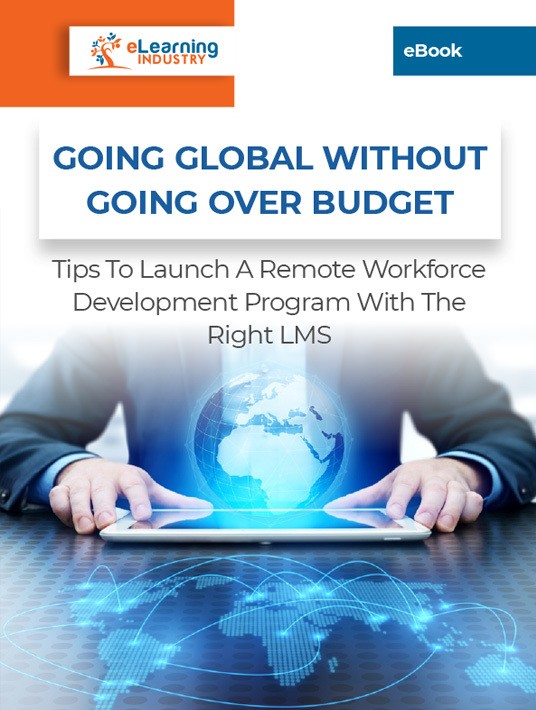Features Your Workforce Development Must Have
There are several aspects involved in LMS. Some portions of the Learning Management System focus on deploying online training. Compliance courses, onboarding, new skills, and so on. The LMS can both develop and administer these eLearning materials. Then there’s the 'non-academic' section of your LMS. Your L&D team is able to take a deep dive into analytics to monitor performance and pinpoint areas for improvement. As well as follow-up with employees to bridge gaps and offer supplemental support. Some systems even carry out routine office tasks. Like issuing invoices, following up customer complaints and so on. You want a workforce development LMS that seamlessly and effectively handles all these essential functions. But which features should you consider during the selection process?

1. Advanced/Customizable Reporting
Both in your online training and non-training spheres, you need to gather data. Metrics vary, so think about the type of reports you need. Basic online training courses cover entry-level reports. As such, these analytics can probably tell you when an employee training participant logged in, and how long they took to complete the online training course. It could show you their test scores and point out units or modules that took longer than others. This could indicate a need to edit that online training course. Workforce development LMS should offer more advanced data. In addition to individual reports, you could match employee training participants against each other. And you can—for example—observe, record, and collate sales data before, during, and after-sales online training. This gives you a direct ROI for your online training, both cash-wise and performance-wise.
2. Gamification
In the example just given, badges could be a helpful tool. At the administrative level, analytics and automated reports give you all the data you need. But while employee training participants can generate and access their own reports, the result will be drab and formal. Instead of looking at a graph of their own performance, they’d get far more pleasure from icons and badges. If employee training participants can earn and review pretty, colorful award badges for each completed online training segment, they stay motivated. Ensure your LMS has the ability to design, create, and automate badges. And make it easy for employee training participants to share these badges at will, even in non-work spaces. Keep in mind that gamification also serves as a helpful (and subtler) form of eLearning feedback.
3. Responsive Support
The term 'responsive' is often misunderstood. Within a relationship, it could refer to an empathetic listener who follows up with actionable steps. In web design, it means content that smoothly and reflexively adapts to your screen size or device type. In online learning—especially as related to workforce development LMS—it’s a mix of both. Responsive tech support implies quick, easy access, so even if they’re not accessible in real-time, they’ll respond within an hour. But it could also mean your employee training participants and LMS administrators can access support on any screen. This can be implemented by ensuring the LMS has multiple support channels. Email, instant messaging, chatbots, phone calls, video calls, etc. Pick the choice that best suits your device e.g. 'free calls' via mobile app.
4. Social Learning Integration
Similarly, for many of us, social media has become unavoidable. We’re in WhatsApp teachers' groups. There are Facebook groups for neighborhood watch. There are Telegram channels for family gossip. It makes sense for smart organizations to incorporate social media platforms into their workforce development LMS. Staff will check DMs before they check Outlook. So, it’s a convenient tool for corporate memos. If confidentiality is a worry, just text them 'check email now!' LMS-wise, you need a platform that easily merges your staff’s personal social platforms with the office ones, especially brand accounts. It’s an essential tool for managing your corporate digital assets. But you can also use it to fuel peer-based collaboration and open up the lines of communication among your team.
5. Blended Online Training Tools
Some organizations are still conflicted about blended learning, but it’s a viable system. Especially when LMS comes into it. Because— for example—the LMS could be used to hold an inter-office workforce online training session. If it has encrypted video-conferencing tools, then it’s the perfect way to literally host a global staff briefing, time zones notwithstanding. And this same cross-border communication tool can be used to create and enable blended online training events. You can use them to record demos, facilitate eLearning feedback, or book one-on-one class time between instructors and specialized employee training participants.
6. Import Options
Pre-packaged software comes fully designed. You just log in and begin. Workforce development LMS requires active course crafting. It has built-in rapid eLearning authoring tools and templates, but you still have to put your online training course together. This may involve uploading office documents, PowerPoint decks, Excel sheets, dashboard cams and so on. Check that your LMS has easy import options from your most popular content sources. For example, it should be compatible with the software you use to record customer care calls. Easy integration tools will allow you to upload, log, and sort those calls (e.g. time, location, recipient, etc.). If this can happen automatically, even better.
Workforce development is best achieved if you have the right tools, and that includes your LMS. So what features are mandatory for your LMS to be a hit with your team? Customizable reporting helps you analyze corporate online training data. Gamification is good for motivation and entertainment. Responsive support provides assistance when needed. Social learning integration allows employee training participants and instructors to use the social media tools they’re most at home with. You should also have blended learning tools and import options so you can upload content from other sources. These features help the efficacy of your online training and make it engaging for employees too.
Do you want to discover more about the benefits a new LMS can bring to your business? Download the eBook Going Global Without Going Over Budget: Tips To Launch A Remote Workforce Development Program With The Right LMS, explore ways to bridge the gaps and enhance your business strategy.








